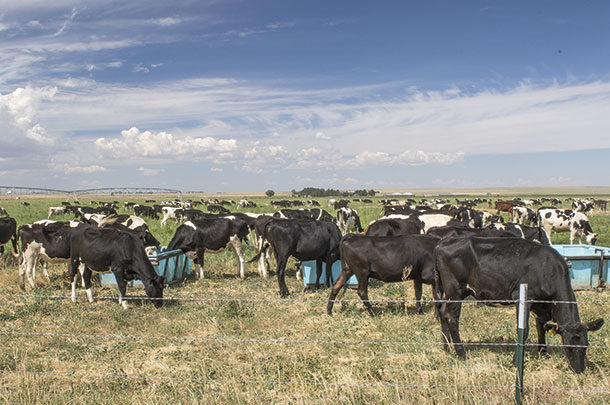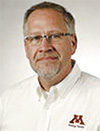Cows will eat more total dry matter when fed a TMR with forages that average greater than 50 percent NDFd. The problem with this is: Alfalfa alone would not likely achieve this (Figure 1).

Corn silage usually is higher on the average for NDFd and complements alfalfa in lactating-cow diets (Figure 2).

Corn silage also has higher dry matter yields and is more consistent, in addition to the NDFd advantage.
As forage testing became part of feeding cows, we tended to place too much emphasis on crude protein content of forage. This was due in part because we wanted to reduce purchased protein and, by default, we had greater NDFd. The higher crude protein forage was most likely less mature.
Cows fed this forage tended to milk better. Now we know NDFd is equally important as crude protein. Energy supply to a high-producing milk cow is more likely to be limited than crude protein, especially when due to limitations on dry matter intake and NDFd.
Measuring the digestibility of a forage can be reported for different timepoints. In the industry now, NDFd30 is one measure widely used to predict NDFd and energy potential for the forage. Why use 30-hour?
It is used for most forages to predict an average time in the rumen of a milking dairy cow eating 3.5 to 4 percent of its bodyweight of dry matter per day. Is it perfect? No, but it does provide an indication and comparison of the forages you have.
Alfalfa with lower lignin concentration has been a goal of alfalfa breeders for many years. This is because we know the lignin concentration has a negative correlation to the NDFd in any forage. This is true not only for alfalfa but for all forages in general.
In recent years, there have been alfalfa varieties released for sale that utilize a genetic modification to reduce lignin synthesis in the alfalfa plant. This has resulted in alfalfa forage with significantly lower lignin concentration when compared to conventional alfalfas cut at the same days of maturity at the same location.
While there has been discussion on differing cutting strategies, many dairymen are still aiming for a 28-day cutting schedule. This allows harvesting alfalfa forage with a relative feed quality of 175 or greater and the possibility of greater intakes and milk production.
But it also provides a little window of time for quality if the weather does not cooperate when it is time to cut. Others are trying to save the cost of harvesting a crop and eliminating one cutting.
Two things associated with the genetically modified, low-lignin alfalfas are the cost and that they are tied to Roundup Ready technology. This makes them a GMO forage that prevents their use in the non-GMO milk market. There are other strategies that can be used to avoid Roundup Ready forage, if that is your choice, and have lower-lignin, higher-NDFd forage.
The use of cool-season grasses in mixtures with alfalfa has always been an option used by many, especially in areas of the Northeast. Because of the climate, there are challenges in survivability and productivity of pure alfalfa stands. Yet grasses have rarely been considered the first choice as a high-quality forage for milking dairy animals. But many changes have occurred over the last 25 years.
First, we have many newer varieties of cool-season grasses that mature later and have been selected for NDFd. Most of these have their origins in Europe, where they rely on grasses much more than we do here in North America. Another major advancement has been in our understanding of cell wall composition and our ability to analyze it.
Tied closely with forage analysis are several nutrition models and programs that can guide ration formulation. Using these, we have a greater understanding of the value of grass as a forage. In Figure 3, we see grasses also can have high NDFd.

While corn is a warm-season grass, most grasses we feed tend to be cool-season grasses, at least in the Northern states. Warm-season and cool-season grass differ not only in their physiology; they also differ in rates of NDFd compared to alfalfa.
This has a value not only because of the higher NDFd but also as a balance to the more rapid NDFd of alfalfa leaves and slower rate of NDFd of alfalfa stems. Grasses also can provide a more effective rumen mat and promote more cud chewing and physically effective NDF.
Three cool-season grasses have emerged in the last 10 years as good choices to feed dairy cows: They are meadow fescue, improved tall fescue and the later-maturing orchardgrass varieties. Others can be considered but may not yield as well or survive as well under more intensive cutting schemes.
My first choice is meadow fescue. It may not be as high in yield but excels in NDFd. Because of this, it will probably yield as much digestible NDF as the other grasses. It also tends to have good winter survivability in mixes with alfalfa and complements alfalfa well at 25 percent of a mixed stand. Adding cool-season grass to an alfalfa stand will also increase dry matter yields, stand persistency and offer weed control.
The improved tall fescue varieties now available have greater palatability and performance compared to the older varieties used down South. New tall fescue varieties also have novel endophyte that can be used down South and not have the detrimental effects of Kentucky 31 and others.
My final choice includes the later-maturing orchardgrass varieties. Orchardgrass used to have early heading varieties like Potomac and others. These cause difficulty by maturing faster than the alfalfa it is planted with. As Ev Thomas likes to say, “If you see the head, the quality is dead.”
Orchardgrass is a bunch-type grass that needs to be cut higher than alfalfa. It also does not do well in continuous grazing. Unlike alfalfa, where starch reserves are in the crown, grasses like orchardgrass have the reserves in the stem and need the 4-inch height cut. “It takes grass to grow grass” is a guide to use, and you will be pleased with the faster regrowth and greater yield in the next crop.
Other grasses may work well in your area, and some varieties of these grasses work better in some areas than others. Work with your seed consultant for recommendations for your farm. ![]()
PHOTO: Cattle grazing in a pasture. Photo by Mike Dixon.

-
Jim Paulson
- Nutritionist and Forage Specialist
- Fieldstone Consulting
- Email Jim Paulson









